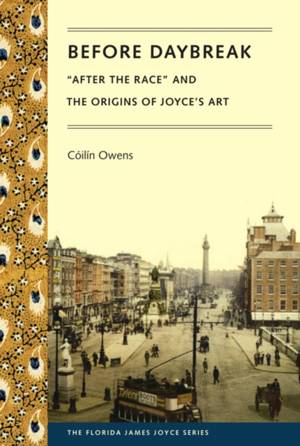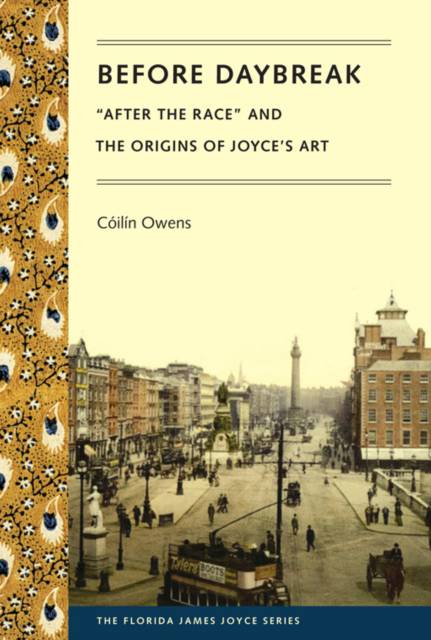
Bedankt voor het vertrouwen het afgelopen jaar! Om jou te bedanken bieden we GRATIS verzending (in België) aan op alles gedurende de hele maand januari.
- Afhalen na 1 uur in een winkel met voorraad
- In januari gratis thuislevering in België
- Ruim aanbod met 7 miljoen producten
Bedankt voor het vertrouwen het afgelopen jaar! Om jou te bedanken bieden we GRATIS verzending (in België) aan op alles gedurende de hele maand januari.
- Afhalen na 1 uur in een winkel met voorraad
- In januari gratis thuislevering in België
- Ruim aanbod met 7 miljoen producten
Zoeken
€ 114,45
+ 228 punten
Uitvoering
Omschrijving
Joyce's "After the Race" is a seemingly simple tale, historically unloved by critics. Yet when magnified and dismantled, the story yields astounding political, philosophic, and moral intricacy.In Before Daybreak, Cóilín Owens shows that "After the Race" is much more than a story about Dublin at the time of the 1903 Gordon Bennett Cup Race: in reality, it is a microcosm of some of the issues most central to Joycean scholarship. These issues include large-scale historical concerns--in this case, radical nationalism and the centennial of Robert Emmet's rebellion. Owens also explains the temporary and local issues reflected in Joyce's language, organization, and silences. He traces Joyce's narrative technique to classical, French, and Irish traditions. Additionally, "After the Race" reflects Joyce's internal conflict between emotional allegiance to Christian orthodoxy and contemporary intellectual skepticism. If the dawning of Joyce's singular power, range, subtlety, and learning can be identified in a seemingly elementary text like "After the Race," this study implicitly contends that any Dubliners story can be mined to reveal the intertextual richness, linguistic subtlety, parodic brilliance, and cultural poignancy of Joyce's art. Owens's meticulous work will stimulate readers to explore Joyce's stories with the same scrutiny in order to comprehend and relish how Joyce writes.
Specificaties
Betrokkenen
- Auteur(s):
- Uitgeverij:
Inhoud
- Aantal bladzijden:
- 352
- Taal:
- Engels
- Reeks:
Eigenschappen
- Productcode (EAN):
- 9780813042473
- Verschijningsdatum:
- 26/02/2013
- Uitvoering:
- Hardcover
- Formaat:
- Ongenaaid / garenloos gebonden
- Afmetingen:
- 160 mm x 229 mm
- Gewicht:
- 589 g

Alleen bij Standaard Boekhandel
+ 228 punten op je klantenkaart van Standaard Boekhandel
Beoordelingen
We publiceren alleen reviews die voldoen aan de voorwaarden voor reviews. Bekijk onze voorwaarden voor reviews.









